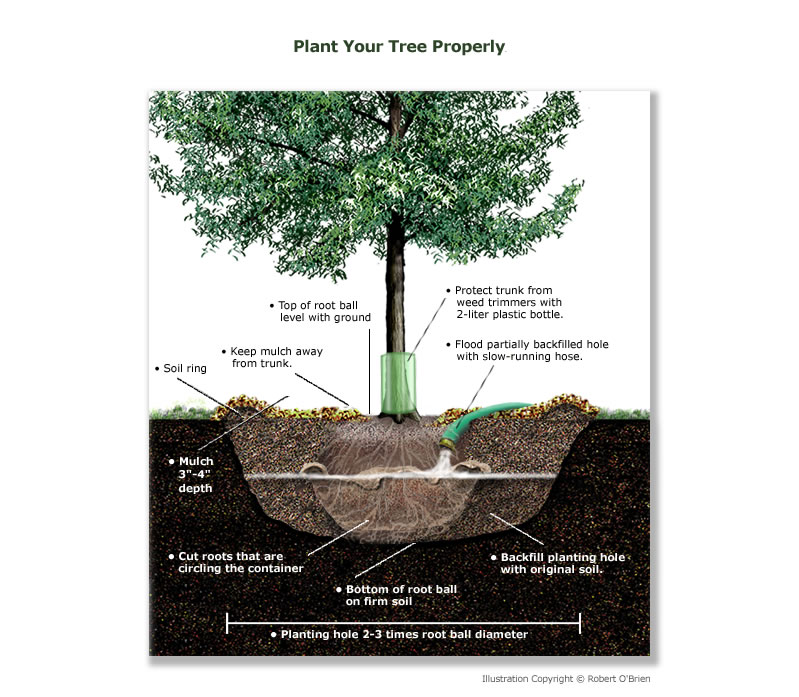
Watch a video on How to Plant a Tree.
1) Select the right tree for your location.
Use a tree that will grow well in your part of the state and make sure it has plenty of room— vertically and horizontally—for the canopy and roots to grow.
2) Dig the hole at least twice as wide as the root ball.
Dig a square hole no deeper than the root ball. This keeps the roots from settling too deep while still allowing them to penetrate the surrounding soil.
3) Fill the empty hole with water and check the drainage.
If it takes longer than 24 hours to drain, select another site. A tree will die if its roots are underwater for long periods of time.
4) Prune the tree sparingly and only if necessary.
Remove only dead, broken and diseased branches and roots that are crushed and girdling, or growing around the main stem. Removing even a small portion of healthy canopy actually slows root growth and delays establishment. A thoughtfully selected tree shouldn’t need to be pruned.
5) Set the tree in the hole with the root collar (area just above the roots) flush or slightly above natural grade.
Planting too deep is a leading cause of mortality in newly planted trees. Don’t pick up the tree by the trunk. Always handle by the container or root ball.
6) Remove all foreign materials from the root ball.
This includes wires, twine, cords, containers and non-biodegradable bags. If planting a tree with roots wrapped in burlap, remove as much of the burlap as possible. This allows water to seep in and the roots to grow out.
7) Gently fill the hole with the same soil that came out of the hole.
Do not add soil amendments. Settle the soil with water. Packing the soil damages and breaks fine roots.
8) Stake the tree only if necessary.
Consult a professional if staking is required. Stakes should not be left in place more than one year.
9) Mulch around the tree at least out to the drip line, two to three inches deep and up to but not touching the trunk.
Wood chips, pine bark, leaf litter and hay are great mulches. Mulching keeps soil temperature fairly steady, boosts soil moisture retention and keeps weeds at bay. Organic mulches add nutrients to the soil as they decompose.
10) Water the tree for at least the first two years, but don’t over water.
A newly planted tree requires six to eight gallons of water for every diameter inch of trunk—per week. A thorough soaking is much better than light, frequent watering.
11) Protect the tree from animals and humans.
Staking to the ground a wire-mesh cage at least three feet in diameter and four feet tall can keep deer and livestock from eating your tree. It also can safeguard your tree from motorized weed-eaters, which can easily kill your tree.
12) Do not fertilize the tree during the first growing season.
Too much nitrogen will burn tender roots, slowing growth and delaying establishment.